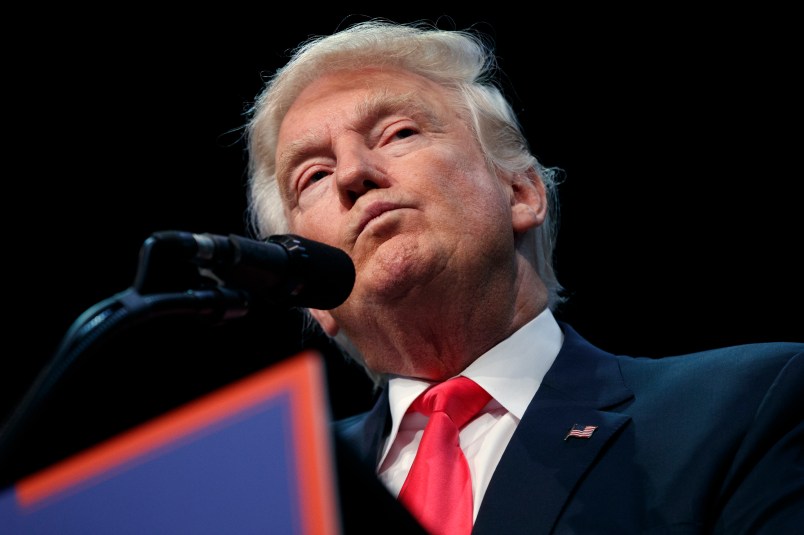Over the last week or so, I’ve had a number readers ask me, why does Trump seem to be closing the margin on Clinton when his campaign seems to be in freefall. The short answer is: he’s not. Here’s the slightly longer answer.
With each new election we have more pollsters and more pollsters using novel polling methodologies. The biggest change is the move to various forms of online polls. On balance, I’m a big supporter of online polls. They’ve had a good record over the last couple cycles. But the details are important. And the methodologies used vary widely.
At this point in the cycle, you have two broad categories of polls. The first are major media polls which use more traditional methodologies and come out with a new poll about once a month or every few weeks. Then you have another group, mainly online but not all, which are in most cases various permutations of tracking polls.
My experience tells me to trust those in earlier category more. But that’s not a judgment I’m backing up with a worked out statistical argument. What is unquestionable is that the second category are more pervasive and constant; those in the first category come much less frequently and to a degree in cycles. What that means is that from one week to the next one category tends to predominate over the other.
And here’s the key. The polls in the second category this cycle have tended to be more favorable to Trump. Which is right? We can’t say for certain. In the primaries the online polls favored Trump too. But their numbers were less accurate in comparison to the actual results than the more traditional polls. The relevant point for now is not to say which is more accurate but simply to say they differ with some consistency. Most of what you’re seeing in the tightening of the numbers is the most recent crop of premium polls receding into the past while the group two polls continue coming out daily or weekly.
Here’s an example. Here’s the current PollTracker trend chart …

Now here’s the chart when I restrict it to the following pollsters: ABC/WaPo, AP/GFK, Bloomberg, CBS, CBS/NYT, CNN/ORC, Fox, Ipsos/Reuters, McClatchy/Marist, Monmouth, NBC/SG, NBC/WSJ, Pew, Quinnipiac, Selzer.

Needless to say, it’s a pretty stark difference.
This list isn’t perfectly consistent. Ipsos/Reuters might arguably be in the second category. But because of major media sponsorship and track record I’ve included it here.
Now, it’s quite possible that category two polls are picking up a Trump trend (which would not be surprising) and the category one polls haven’t been in the field to detect it. The one exception is the highly regarded Bloomberg/Selzer poll which showed a 6 point race in the two candidate match up in a poll that was completed on August 8th.
Now here’s one other point to address.
A few of you have asked why the state by state results have been moving in a consistently pro-Clinton direction while the nation-wide margin is contracting. There’s no reason they have to totally line up of course. But they shouldn’t go much of out sync. The reason is similar. The state polls are heavily weighted toward the group one, major media polls using more traditional polling methodologies. I’m not saying which is right or wrong. But again, the apparent divergence seems to be a result of these different groups of pollsters and different methodologies.
We’ll know more as more of both categories of polls are released.






